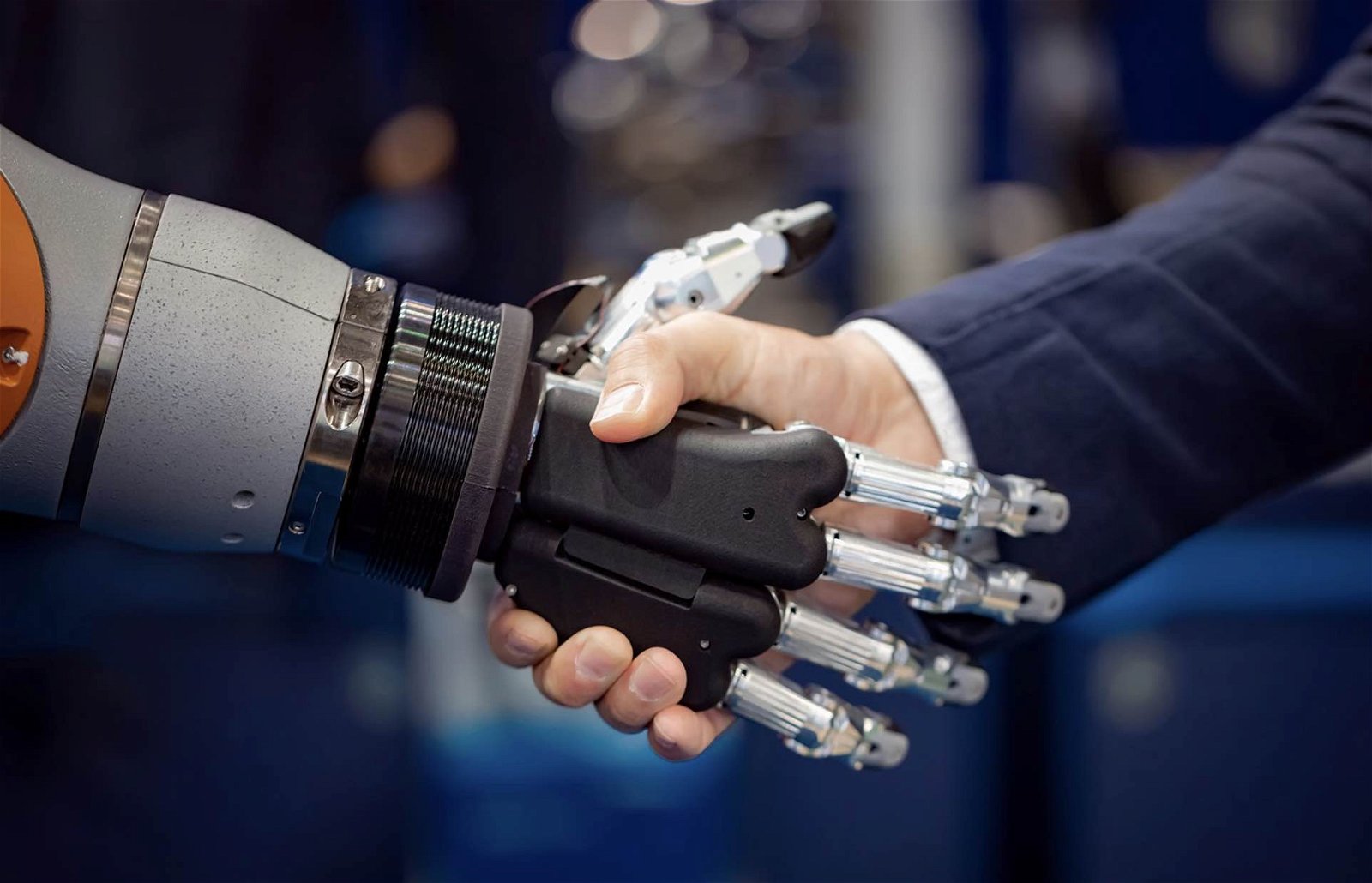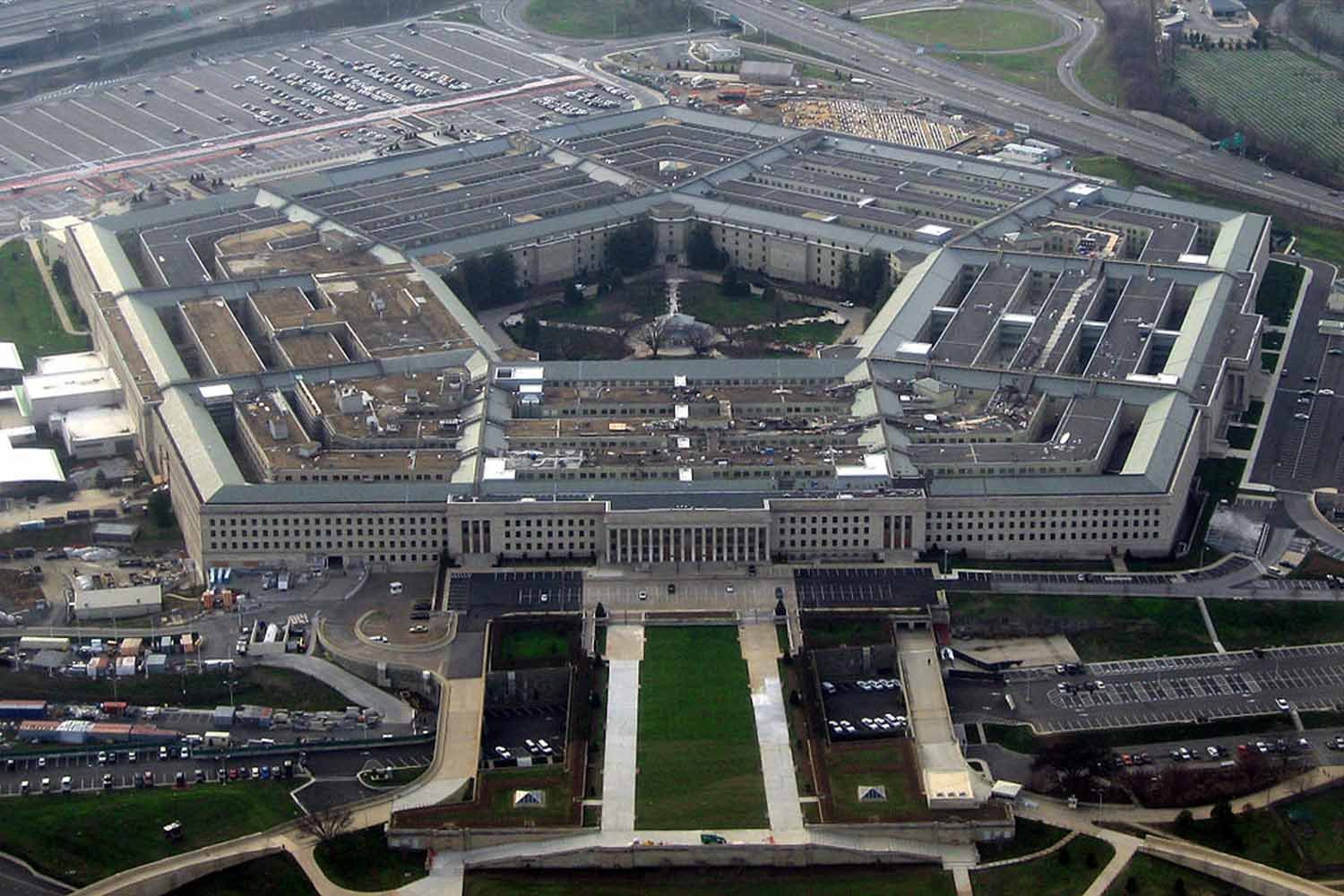

Welcome to this week’s installment of The Intelligence Brief… as the Pentagon’s efforts to bring artificial intelligence more comprehensively into its operations continue, this week we’ll be looking at 1) the current status of the DOD’s Office of the Chief Digital and Artificial Intelligence Officer, 2) developments in recent months related to the DOD and AI, and 3) how current efforts at the Pentagon figure into concerns about an “Artificial Intelligence arms race”.
Quote of the Week
“By far the greatest danger of Artificial Intelligence is that people conclude too early that they understand it.”
―
Before we dive into things, a few of the stories we’re covering this week includes new research on perception that feeds into the debate that reality is, fundamentally, just an illusion, as well as how a smart device is tricking metals into behaving like more valuable metals used in electronic devices, helping with the metal shortage.
The Pentagon’s AI Efforts Are Going Full Steam Ahead
Earlier this month, the Department of Defense announced that it reached full operational capability with a new office that will oversee its digital and artificial intelligence (AI) enterprises.
Last week it was reported that the Office of the Chief Digital and Artificial Intelligence Officer (CDAO) had completed the fulfillment of its personnel positions with an additional pair of new hires. Serving as deputy to the Chief Digital and Artificial Intelligence Office, Algorithmic Warfare will be Joe Larson, who previously held a similar position within the DOD’s Project Maven.
The second position within the CDAO, which will oversee its Responsible Artificial Intelligence Division, will be held by Diane Staheli, whose background involves data analytics and AI ethics with MIT’s Lincoln Laboratory.
As part of the DOD’s recent makeover of its digital and artificial intelligence-enabled offices, the newly equipped CDOA will lead the Department’s efforts to establish its digital infrastructure of the coming decades, ultimately aiming to enable data and AI capabilities in the event of future crises, combat situations, and a host of other military applications.
Background: The Chief Digital and Artificial Intelligence Officer
“The Department of Defense must become a digital and artificial intelligence (AI)-enabled enterprise capable of operating at the speed and scale necessary to preserve military advantage,” wrote Deputy Secretary of Defense Kathleen Hicks in a memo dated February 1, 2022.


“The Chief Digital and Artificial Intelligence Officer (CDAO) and its supporting Office (OCDAO) are charged with ensuring it does,” Hicks added, outlining its functions that include oversight of the Pentagon’s strategy development and policy formulation for data, analytics, and AI. This, along with an aim to “break down barriers to data and AI adoption within appropriate DoD institutional processes” and to “create enabling digital infrastructure and services that support Component’s development and deployments of data, analytics, AI, and digital-enabled solutions.”
In April, the DOD announced that Dr. Craig Martell would fill the position of Chief Digital and Artificial Intelligence Officer. “Dr. Martell brings extensive industry experience and expertise in artificial intelligence (AI) and machine learning,” read a Pentagon statement, outlining his role in serving “as the department’s senior official responsible for accelerating the adoption of data, analytics, digital solutions, and AI functions to generate decision advantage from the boardroom to the battlefield.”
Martell served in the past as a tenured professor at the Naval Postgraduate School with a focus on computer science and natural language processing. Prior to his position as the Pentagon’s CDAO, Martell had previously worked as the head of machine learning for Lyft, along with stints working for Dropbox and LinkedIn.
However, now that things are getting under way with the DOD’s AI efforts, what could this really mean going forward, and are concerns related to an “artificial intelligence arms race” warranted?
Increasing Competition, and the Artificial Intelligence Arms Race
During its recent DoD Digital and AI Symposium online event, CDAO’s new deputy chief digital and artificial intelligence officer, Margie Palmieri, described CDAO’s efforts in language familiar to those drawing from experience with AI in the private sector.
“Companies go into mergers and acquisitions to be competitive… that’s exactly what the Department of Defense is doing. We are increasing our competitive advantage by bringing these different groups together,” Palmieri said.
“And for the first time in my career of over 15 years in government at this point, all the right levers of change and influence are coming into play in the CDAO,” Palmieria added, expressing that for CDAO to “show what a different operating model looks like is one of our top priorities.”


The CDAO’s efforts to leverage its assets come amidst rising concerns about the unforeseen effects of the U.S. military’s role in the development of AI for use on the battlefield. Writing for Foreign Affairs back in May, Michael C. Horowitz, Lauren Kahn, and Laura Resnick Samotin noted what they called “dueling risks” that could result from AI.
“If it moves too slowly, Washington could be overtaken by its competitors, jeopardizing national security,” the authors wrote. “But if it moves too fast, it may compromise on safety and build AI systems that breed deadly accidents. Although the former is a larger risk than the latter, it is critical that the United States take safety concerns seriously.”
One of the greatest strategic challenges the U.S. currently faces in this sphere has to do with rising concerns over the transfer of dual-use AI-driven technologies by countries like China, which can be adapted for use in weapons systems. The reality of the AI arms race that is currently underway is even more apparent considering increasing geopolitical stresses like Russia’s invasion of Ukraine, and the realignment of economic and strategic assets in its aftermath.
The increased use of artificial intelligence by world superpowers will almost inevitably mean that the next Cold War will come to fruition not just within a political or economic context, but primarily within the digital landscape. Thus, with its access to data-driven resources, the U.S. is right to be concerned about how foregin adversaries like China may be able to gain foothold with AI, especially as the DOD continues to improve its own strategies and capabilities.
That concludes this week’s installment of The Intelligence Brief. You can read past editions of The Intelligence Brief at our website, or if you found this installment online, don’t forget to subscribe and get future email editions from us here. Also, if you have a tip or other information you’d like to send along directly to me, you can email me at micah [@] thedebrief [dot] org, or Tweet at me @MicahHanks.


Here are the top stories we’re covering right now…
- Smart Device is Tricking Metals to Behaving like Other Metals within Electronic Devices
A new smart device is tricking metals into behaving like more valuable metals used in electronic devices, helping with the metal shortage.
- With Age Comes Wisdom: Life’s Astronomical Puzzles
While humans have gleaned a tremendous amount of knowledge about the universe, there are several astronomical puzzles about our lives that remain mysterious.
- UFO at the Miami Air and Sea Show?
Did retired NBA agent David Sugarman recently capture video of a UFO at the Hyundai Air and Sea Show in Miami Beach?
- The Dangers of AI: Bad Algorithms are a More Immediate Danger than Ultron What if machine learning models like GPT-3 are doing more harm than good?
What if machine learning models like GPT-3 are doing more harm than good?
- Coffee Alters Brain Connectivity to Make You Smarter
Coffee improves the functional connectivity within the human brain, making it operate at a higher level of efficiency, new research says.
- Documents Reveal Alleged Russian PSYOP Instructions For Dealing With Ukrainians
Kremlin documents purportedly reveal instructions to Russian soldiers on conducting effective psychological operations, or PSYOP, when dealing with Ukrainians in occupied territories.
- Alleviating the Tyranny of the Rocket Equation Through Intergalactic Travel at Low Accelerations
Could there be new physics that suppresses the dreadful exponent of the rocket equation?
- Could the Double-Slit Experiment Finally be Solved?
The famous double-slit experiment has puzzled scientists for decades, but now a new breakthrough might change our perception of it.
- Could Depression Be Linked to Certain Proteins in Our Food?
New research details the possible links between certain proteins like proline and individuals who suffer with depression.
- Top UFO Patents Since Roswell: Tech Talk
In the latest edition of Tech Talk, The Debrief’s Mr. Stefan Gerhart and Josh Rutledge dive into the murky history of UFO Patents
- Incursions at the Border: Homeland Security Agents Tell of Encounters With Unidentified Aerial Phenomena Sightings and video footage of aerial objects that defied explanation led one Customs and Border Patrol Agent to push for the creation of a UAP Task Force within the DHS.
Sightings and video footage of aerial objects that defied explanation led one Customs and Border Patrol Agent to push for the creation of a UAP Task Force within the DHS.
- The Galactic Trading Card of Human Civilization
A curious civilization seeking to increase its scientific knowledge by exploring the unknown will win the Galactic contest of trading cards.
- Boeing’s Starliner Touches Down After Successful Mission to the ISS
Following the successful touchdown of NASA and Boeing’s new CST-100 Starliner spacecraft, we’ll be looking at what vehicles like Starliner may be able to provide to future orbital operations even beyond the ISS.
- Interstellar Kites: Galactic Surfing on Light?
Here’s hoping that they are some interstellar environmentalists out there who have already started to clean our cosmic neighborhood.
- Good News About Blueberries, this Fruit Can Help Reduce Risk for Prediabetes and Dementia
A recent study has linked the consumption of blueberries with lower risks of dementia as well as prediabetes.